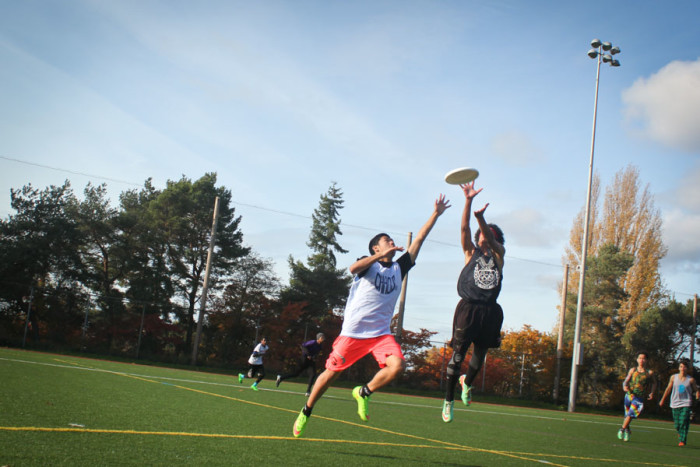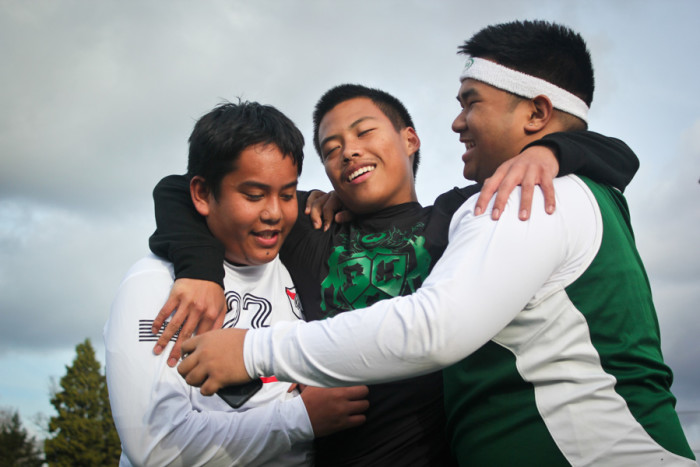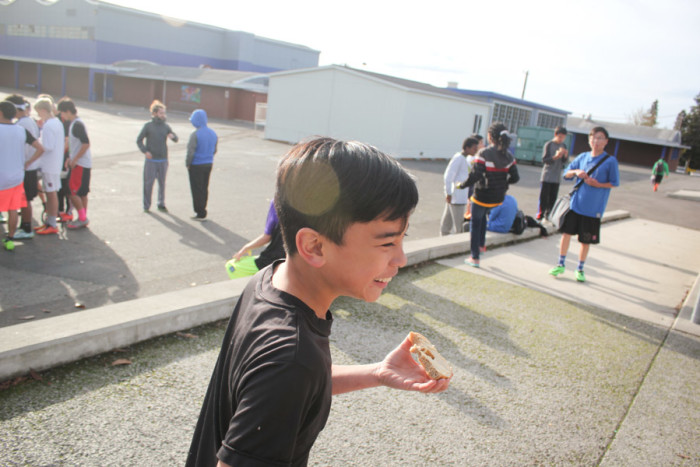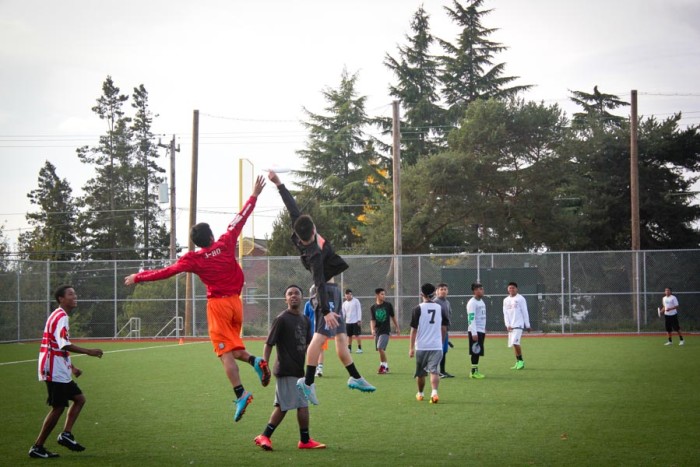
Run, jump, catch, and throw. Sweat beads down the side of my forehead as I catch up to the person I’m guarding. The opponent throws the Frisbee and I have to dive and knock it down and force a turnover for my team.
I’ve been in love with Ultimate Frisbee ever since I began playing in the spring of 2011 when I was 13 years old. The game, also known as “ultimate,” conflates aspects of soccer, football, and basketball into a fast paced, non-contact sport that centers on the ability to throw and catch a plastic Frisbee.
Ultimate is beginning to gain popularity across the country, with Seattle being one epicenters of its growth.
But as much as they love the game, high school Ultimate players like me are frustrated. Our favorite sport isn’t recognized by Seattle Public Schools.
“In middle school, Ultimate is a Seattle Public School sport,” said Sam Terry, one of the co-head coaches at Asa Mercer Middle School on Beacon Hill. “But in high school, it’s a whole different story.”
Middle school Ultimate programs get district funding that helps pay coach stipends as well as to buy equipment like Frisbees and cones. That funding is a big deal at school like Asa Mercer, where I went. Seventy one percent of the students at Asa Mercer are eligible for free or reduced lunch, and they rely heavily on programs funded through the school district for after school activities.
But for high school Ultimate, most teams receive little to no funding from their school district. Ultimate is not recognized as a high school varsity sport, like basketball, football, golf, soccer and several others, so it’s not funded generously like those sports are. Instead, Ultimate is considered a “club activity,” like chess, debate, or any other school club.

“Funding for high school Ultimate varies depending on the school,” explains Jude LaRene, one of the directors of DiscNW, which is the organization that is in charge of Seattle youth Ultimate teams. The athletic director at each high school decides how much, if any, funds goes toward an Ultimate program.
The Washington Interscholastic Activities Association (WIAA) governs high school athletics in Washington state. They have certain regulations that each sport has to meet to be recognized as a varsity sport.
“One step to get Ultimate recognized [as a sport] is to follow the guidelines of the WIAA,” Larene said.
Such guidelines include not allowing unofficial offseason practices lead by coaches and other personnel. Instead, players would have to coordinate and facilitate their own practices outside of season dates.
But with Ultimate getting recognition in other parts of the country, the time may have come for Seattle.
“It’s possible that it [Ultimate] has doubled in sheer participation compared to when I first began coaching,” Terry said.

The growth in Ultimate has been especially big in South Seattle. Initially, Ultimate programs in Seattle were mostly limited to private schools in North Seattle. But now Ultimate in South Seattle reaches out to a diverse community of youth of color who are often marginalized. There are various leagues for youth including co-ed and single gender elementary, middle, and high school-aged students.
Kenzo Yoshitomi is one ultimate player who started early. Now he’s a junior at Cleveland High School who has been playing Ultimate since the age of eleven.
“It sucks to know that Ultimate isn’t respected or recognized as a sport by other people,” Yoshitomi said. “Some people call it a ‘dog sport.’”
In fact, there are a lot of great lessons for young people to learn about sportsmanship and community.
“What separates Ultimate from other sports is the idea of no referees,” Terry said. “Players have to make their own calls on the field.”
This idea of self-officiating is based on an idea of “Spirit of the Game,” which holds players accountable to make honest calls on the field. Players are taught this when first learning Ultimate, and it helps develop a sense of community that not a lot of sports can provide.

In 2004, a group of organizers proposed middle school Ultimate to the Seattle Public School District as an activity that was affordable for schools to provide for their students. This resulted in middle school Ultimate being funded by the Families and Education Levy.
But for high school Ultimate players, it is difficult to have the sport they know and love not receive the respect and recognition it deserves.
Terry believes that can only happen if members of the Ultimate community — both adults and youth —approach the Seattle Public School District with a detailed proposal about why Ultimate should be recognized as a sport.
“It has to start with people within our schools that actually care,” Terry said.
Ronnie Estoque was a participant in the Fall 2015 Globalist Youth Media Intensive. The program is supported in part by the Seattle Office of Arts & Culture.


Well written Ronnie! I completely agree and would add that there is significant talent in the South end teams that needs and deserves to be supported. Sign me up for any proposal to the Seattle Public Schools.
Ronnie, very well written, and a great argument you’ve made for greater recognition of Ultimate by public school systems, in Seattle and elsewhere. One note on Spirit of the Game: it’s greater than an idea. I’d argue that it’s a core principle of the sport, and this principle applies beyond just self-officiated games. Ultimate, like many team sports, teaches important skills that can be used on- and off-field. Ultimate in particular helps develop autonomy, mutual respect, and conflict management. Wishing y’all the best as you work with DiscNW to advocate for inclusion as a recognized varsity sport.